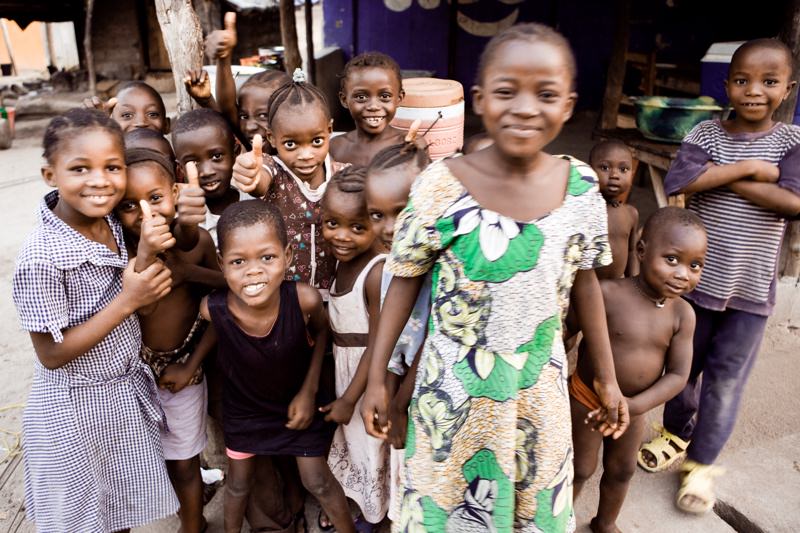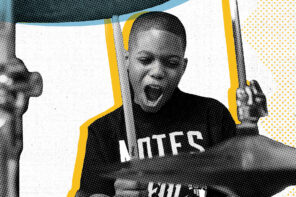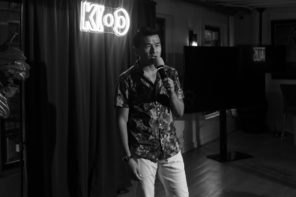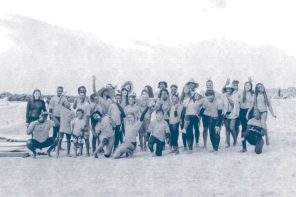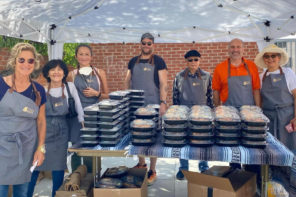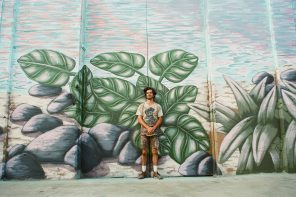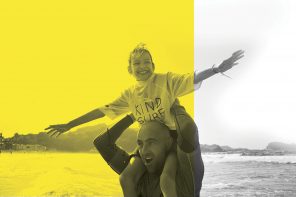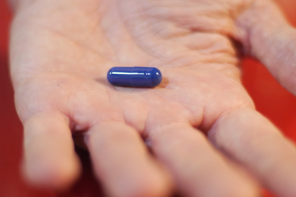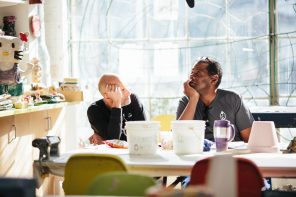Heather Tierney Interviews Tiffany Persons
We asked 30 people who we admire to each interview one person they admire. That’s the concept behind the Interview Issue presented by Design Within Reach.
The Butcher’s Daughter Founder Heather Tierney chose Shine On Sierra Leone Director and Founder Tiffany Persons
Follow @thebutchersdaughter_official and @shineonsierraleone
People would say “I love what you are doing in Sierra Leone” and I would smile, but I felt like a fake inside. I realized that the need would never end.
Heather Tierney: What is the first thing you do when you wake up each day?
Tiffany Persons: The moment I open my eyes, I stretch, look up and smile (somewhere along the way I learned that the physical act of smiling sends endorphins and serotonin to the brain) and say out loud “thank you for an amazing day,” meditate for 20 minutes, write a list of “things that I love” in my journal and chant “Nam-myoho-renge-kyo” for 5 minutes, scan a section of The Zohar (studied Kaballah years ago and this practice stuck with me), power smoothie or a cup of bone broth, shower and I’m ready for the world.
HT: If I pressed play on your most listened to tracks in your music library right now—what would I hear?
TP: All of Michael Kiwanuka’s Love and Hate album—obsessed, a little bit of Bjork and Salif Keita
HT: Are you more of a hunter or a gatherer? Why?
TP: I’m a hunter by design..who loves to work with gatherers that live for the fine details. I love teams.
HT: Who would you want to be trapped in an elevator with?
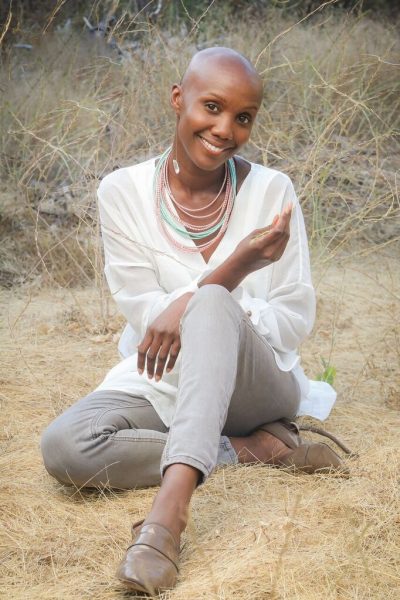 TP: A Sierra Leonean ancestor who would download me on all of the cultural practices, plant medicine knowledge and insights that were lost or forgotten through the colonialism, wars and trauma over the past century in Sierra Leone.
TP: A Sierra Leonean ancestor who would download me on all of the cultural practices, plant medicine knowledge and insights that were lost or forgotten through the colonialism, wars and trauma over the past century in Sierra Leone.
If being alive is essential; I choose Michelle Obama because for me, she is an icon of authenticity. It seems to be man’s greater challenge (in this part of the world) to simply “be who they are” and not worry about how they are perceived. That is one of the greatest challenges for many of us. I want to tell her “thank you.”
I’d choose Hafiz because I’d want to dive deep into the joys of love… and maybe co-write a poem together.
HT: Where do you find your inspiration these days?
TP: I’m deeply inspired by nature. I recently moved to a cabin-like home in the middle of a live oak forest in Topanga, CA. My greatest joy is watching blue jays, hummingbirds and the adorable little birds with black heads, and ones with the gray mohawks eat black sunflower seeds from the feeders around my home. This, along with watering and tending to my garden are some of the most treasured moments of my life right now.
Each day over 100 children would put on their uniforms and gather in the dilapidated, roofless building to learn from five volunteer teachers.
HT: You started a non-profit called Shine on Sierra Leone a decade ago. Tell me a little bit about the organization and what inspired you to start it.
TP: I originally went to Sierra Leone to film a documentary that followed the path of a diamond from the earth to the consumer and document different lives that it would affect along the way. I lived in a diamond mining community for three months and fell in love with the people and, of course, the magical children.
There was a school in the middle of the village that had been burned down by the rebels during the 10-year war. Each day over 100 children would put on their uniforms and gather in the dilapidated, roofless building to learn from five volunteer teachers. The teachers shared a box of chalk and did their best to keep the children engaged. What I found the most inspiring was the children unwavering eagerness to learn. Even with rain pouring through the classroom (the roof was a plastic tarp held up by sticks from the surrounding forest) students excitedly leaned forward in their chairs, hands outstretched, teeming with anticipation at the thought of being called upon. I had never seen a thirst for knowledge quite like this. I had never experience “presence” in a classroom like this.
It was in that moment, I decided that I wanted to make sure that every child within this village had an opportunity to have an education. It was in that moment that Shine On Sierra Leone was born.
In my limited perspective, I believed money could fix this situation.
HT: Has your view of the non-profit and philanthropy sector changed over the years?
TP: Yes, it has. Only one thousand percent. When I first started, I was like many people on their first visit to West Africa. I was deeply impacted by what I saw as extreme poverty. I felt sorry for everyone and just wanted to help them. In my limited perspective, I believed money could fix this situation. After about two years I hit a wall. I was depressed and I couldn’t shake the feeling that something wasn’t right. People would say “I love what you are doing in Sierra Leone,” and I would smile, but I felt like a fake inside. I realized that the need would never end. For over 50 years, aid has been given to Africa, but the problem was just becoming bigger. What were we missing?
My greatest desire for the people in Sierra Leone was for them to thrive, expand and evolve. Above all, I wanted to see them be the authors of their own lives. I realized that aid, as we have been going about it, was only perpetuating more dependency and ultimately was creating more of the very thing it intended to end. At that moment, I changed our name from a “charity” to a “partnership” and I went to Sierra Leone and asked the community if they indeed wanted to be partners.
This is a powerful, tangible, exhibit that thoughts create things.
HT: You once told me a story about a classroom experiment that has always stuck with me. The kids had two jars filled with the exact same rice. One jar the kids projected negative thoughts over a period of time and the other jar they projected positive thoughts. Describe what happened.
TP: The goal of our educational vision is to illuminate each child with the personal understanding that they have the power to influence the world around them in a positive or a negative way. Inspired by Dr. Masaru Emoto, one of the experiments for our 6th-grade class is to have two glass jars with water and cooked rice inside. One labeled “Love” and the other labeled “Hate.” Each day they would spend a few minutes looking at the “Love” jar and share their good feelings and thoughts. Alternatively, they would send negative, hurtful thoughts to the “Hate” jar. After two weeks, the “Love” jar was beautiful, pure white rice. The “Hate” jar, however, was dark green and moldy. This is a powerful, tangible, exhibit that thoughts create things. It helps them understand how words can cause damage to others or to heal them. This is the foundation of our students understanding that their mind can be used as a tool, a weapon or a gift.
HT: I’m at the bookstore and I see a copy of your autobiography. Tell me about what the title is and what’s on the cover?
TP: The cover: will have 100 faces from Sierra Leone of all ages. My face will blend amongst them. The title: “It’s All Relative … My Journey to Myself.” The reason this is the title is because after working with Sierra Leone for 10 years, I decided to have my DNA test done. I found that my entire maternal lineage is from a little lady in Sierra Leone. I am the exact tribes that I was led to a decade prior. I am Temne, Fulani and some Mende. This is my life’s work. I am honored to be in this mutually beneficial relationship with Sierra Leone. We make each other better.

